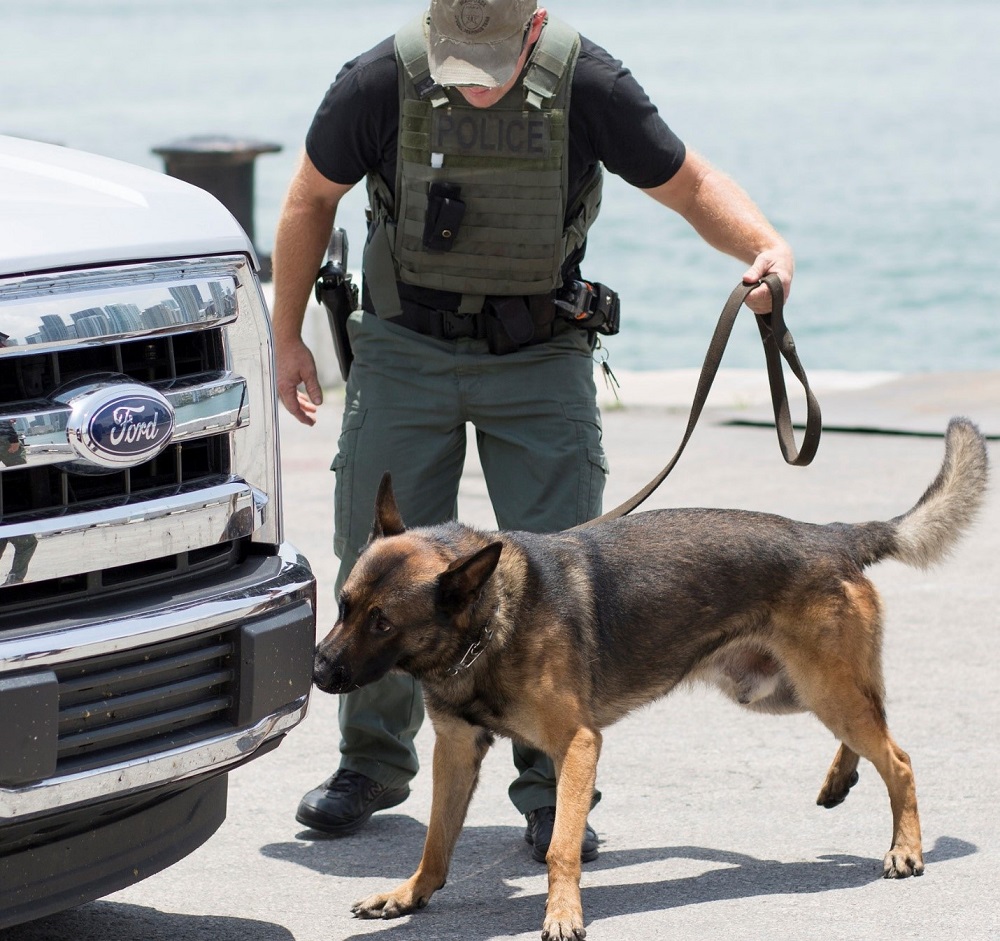To the dog, it’s just one big game. Find the target odor and receive the reward. To us, it’s the satisfaction of knowing we are safe because highly-trained explosives detection dogs are at work with their handlers. Canines are widely recognized as one of the best, most versatile mobile explosive detection assets available for protecting the homeland from explosive threats, and the use of explosives detection canines is expanding. In 2017, the Department of Homeland Security (DHS) Science and Technology Directorate’s (S&T) Detection Canine Program established the Regional Explosives Detection Dog Initiative (REDDI) to help provide state and local law enforcement canine handlers and trainers with the tools, techniques and knowledge to better understand, train and deploy detection canines.
Since then, S&T’s team of experts has traveled all over the nation to bring REDDI to state and local law enforcement agencies. REDDI is a two-day event that includes odor recognition trials and operationally relevant scenarios. Realistic threat devices are strategically placed throughout a venue such as a sports stadium that is provided by the hosting law enforcement agency to ensure assessment is in the canine team’s working environment. The canine teams are then tasked with the job of finding the threats.
 Operationally relevant search exercises are an important part of ensuring canines stay proficient in recognizing the odors they are trained to detect. Other REDDI highlights include classroom elements providing an overview of explosives and improvised explosive devices (IEDs) with a focus on the domestic threat, and training aid storage and handling. Participants receive real-time feedback on their performance results which helps inform them of their strengths as well as areas of concern. Through REDDI, S&T can convey to canine teams whether their training supports their operational demands.
Operationally relevant search exercises are an important part of ensuring canines stay proficient in recognizing the odors they are trained to detect. Other REDDI highlights include classroom elements providing an overview of explosives and improvised explosive devices (IEDs) with a focus on the domestic threat, and training aid storage and handling. Participants receive real-time feedback on their performance results which helps inform them of their strengths as well as areas of concern. Through REDDI, S&T can convey to canine teams whether their training supports their operational demands.
“S&T has the ability to bring this opportunity directly to state and local canine teams,” said Don Roberts, S&T’s Detection Canine Program Manager. “State and local law enforcement is the leading edge on protecting the homeland, but many of these teams have limited access to the latest knowledge on explosive threats, or don’t have the resources available to replicate an operationally relevant scenario and REDDI brings that to them. In return, we are collecting valuable data from all over the country that is helping to guide the direction of our R&D investment to meet the challenges faced throughout the Homeland Security Enterprise.”
To date, 16 REDDI events have been held, supporting 226 detection canine teams encompassing 92 jurisdictions from Florida to Connecticut to California. A typical REDDI event is hosted in a region where several nearby local law enforcement agencies can easily participate and benefit. The multi-jurisdictional nature of this format provides a networking opportunity between canine handlers from different agencies, and feedback from participants suggests this is a valuable element as they compare notes with each other on potential gaps and vulnerabilities and their solutions.
“When I first heard about the program, I thought this would be excellent for our bomb guys,” said Sergeant William Brown of the Kansas City, Missouri Police Department. “As trainers and handlers, we get accustomed to just doing our own thing and not seeing what else is out there. It’s opened up some eyes to some things and actually giving us things that we need to go back and work on.”
Other REDDI participants agreed: “We have our strengths, we have our weaknesses, different methodologies from one team to the next,” said Master Police Officer Thomas Eggers of the Fairfax County, Virginia Police Department.
“When [S&T] presented what the program was, with some different odor recognition testing and some practical exercises, it seemed like a great opportunity for us to get our dogs together,” said Lt. Frank Glover, of the Lee County, Florida Sheriff’s Office.
There are currently an estimated 16,000 working dogs in the United States, including dogs working in federal, state and local law enforcement. REDDI is specifically geared toward understanding the operational readiness of state and local law enforcement explosive detection canine teams and provides access to the kind of independent assessment data that they may not otherwise receive. Sharing the knowledge S&T is gathering across the nation helps to further improve detection canine team proficiency nationally.
“One of the things that’s unique about the S&T Detection Canine Program is that we have built together a cadre of experts, from canine operations and training subject matter experts to scientists with expertise in odor chemistry,” said Roberts. “The exciting thing about REDDI is that it gives us a way to not only share all this expertise with canine teams on the state and local level, but it helps us see what challenges and needs there might be that we can help address.”

